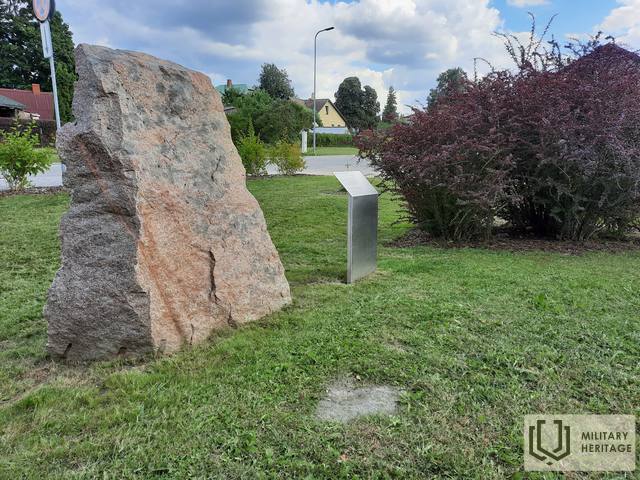Atminimo akmuo suomių savanorių pulkui „Šiaurės berniukai“
Memorialinė vieta

Įsikūręs Alūksnėje, Jāņkalna gatvėje 52, šalia Alūksnės siaurojo geležinkelio stoties.
2019 m. vasario 23 d., minint Latvijos Nepriklausomybės karo šimtmetį, Nepriklausomybės kovos tradicijų asociacijos (Suomija) iniciatyva buvo sukurta speciali atminimo vieta Suomijos savanoriams, žuvusiems už Latvijos nepriklausomybę, pagerbti, kurioje istorinius įvykius liudija specialus riedulys ir informacinė lenta. Atminimo akmuo į Alūksnę atkeliavo iš Suomijos – Salpos linijos, kuri buvo nutiesta 1940–1944 m., siekiant apsaugoti rytinę Suomijos sieną. 1200 km ilgio Salpos linija yra viena žymiausių nepriklausomos Suomijos gynybos linijų, taip pat vienas stipriausių ir geriausiai išsilaikiusių tokio tipo gynybos statinių Europoje po Antrojo pasaulinio karo.
Į Alūksnę atgabentas akmuo simbolizuoja dviejų tautų – suomių ir latvių – kovą už savo nepriklausomybę. Suomijos savanorių pulkas „Šiaurės berniukai“ išvyko padėti latviams ginti naujosios Latvijos valstybės laisvę. 1919 m. vasario 21 d. „Šiaurės berniukai“ dalyvavo įnirtingose kovose Alūksnės (Marienburgo) apylinkėse. Po penkias valandas trukusių mūšių netoli Alūksnės geležinkelio stoties suomiai užėmė Alūksnę. Šiame mūšyje žuvo 23 suomių savanoriai, daugelis buvo sužeisti.
Panaudoti šaltiniai ir literatūra:
Tuomo Juntunenas. Marnienburg 21. 2. 1919. Pirkkala 2019, p. 64.
Alūksnėje atidaryta suomių karių atminimo vieta. Alūksnės savivaldybės žinios. 2019 m. kovo 6 d. Nr. 3 (111).
Susijusi laiko juosta
Susijusios temos
Susijusi istorija
Apie Latvijos Nepriklausomybės karą ir 1918 m. įvykius Alūksnėje
1918 m., kai vokiečių kariuomenė įžengė į Alūksnę, Latvijos šaulių batalionai atsitraukė į Sovietų Rusiją. Iki 1918 m. gruodžio pradžios buvo įtvirtintas vokiečių režimas ir vykdomos reorganizacijos. Vokietijai kapituliavus kare, bolševikai grįžo į Alūksnę ir atkūrė savo valdžią. Suomijos savanoriai taip pat kovojo Estijos armijos sudėtyje Latvijos Nepriklausomybės kare. 1919 m. vasario 21 d. Alūksnėje, netoli stoties, vyko įnirtingi mūšiai tarp bolševikų ir Suomijos savanorių pulko „Šiaurės berniukai“.
Apie Latvijos Nepriklausomybės karą ir 1919 m. įvykius Alūksnėje
1919 m. kovo 27 d. 1-asis Valmieros pėstininkų pulkas kartu su Talino (tuometinio Rėvelės) ir Tērbato Estijos gvardijos (kaitselit) batalionais bei trimis šarvuočiais traukiniais pradėjo Latvijos išlaisvinimą nuo bolševikų nuo Melnupės upės krantų.
Anšlavo Eglīčio prisiminimai apie Latvijos nepriklausomybės karą ir 1919 m. įvykius Alūksnėje
1919 m. kovo 27 d. 1-asis Valmieros pėstininkų pulkas kartu su Talino (tuometinio Rėvelės) ir Tērbato Estijos gvardijos (kaitselit) batalionais bei trimis šarvuočiais traukiniais pradėjo Latvijos išlaisvinimą nuo bolševikų nuo Melnupės upės krantų.
Suomijos savanorių pulko „Šiaurės berniukai“ mūšis Bejoje
1919 m. vasario 23 d. Suomijos savanorių pulko „Šiaurės berniukai“ žvalgybos dalinys, tikėdamasis gauti papildomų ginklų ir amunicijos, atvyko į Bejos mokyklos daubą, kur įvyko susidūrimas su bolševikais (Babeckos mūšis). Šiame mūšyje žuvo 10 Suomijos pulko kareivių.
Suomijos jėgerių vėliavos pašventinimas Liepojos Šventosios Trejybės katedroje
Pirmoji Nepriklausomos Suomijos vėliava buvo pašventinta 1918 m. Liepojoje, Šventosios Trejybės bažnyčioje, kur suomių jėgeriai prieš išvykdami namo prisiekė ištikimybę teisėtai Nepriklausomos Suomijos vyriausybei.

















